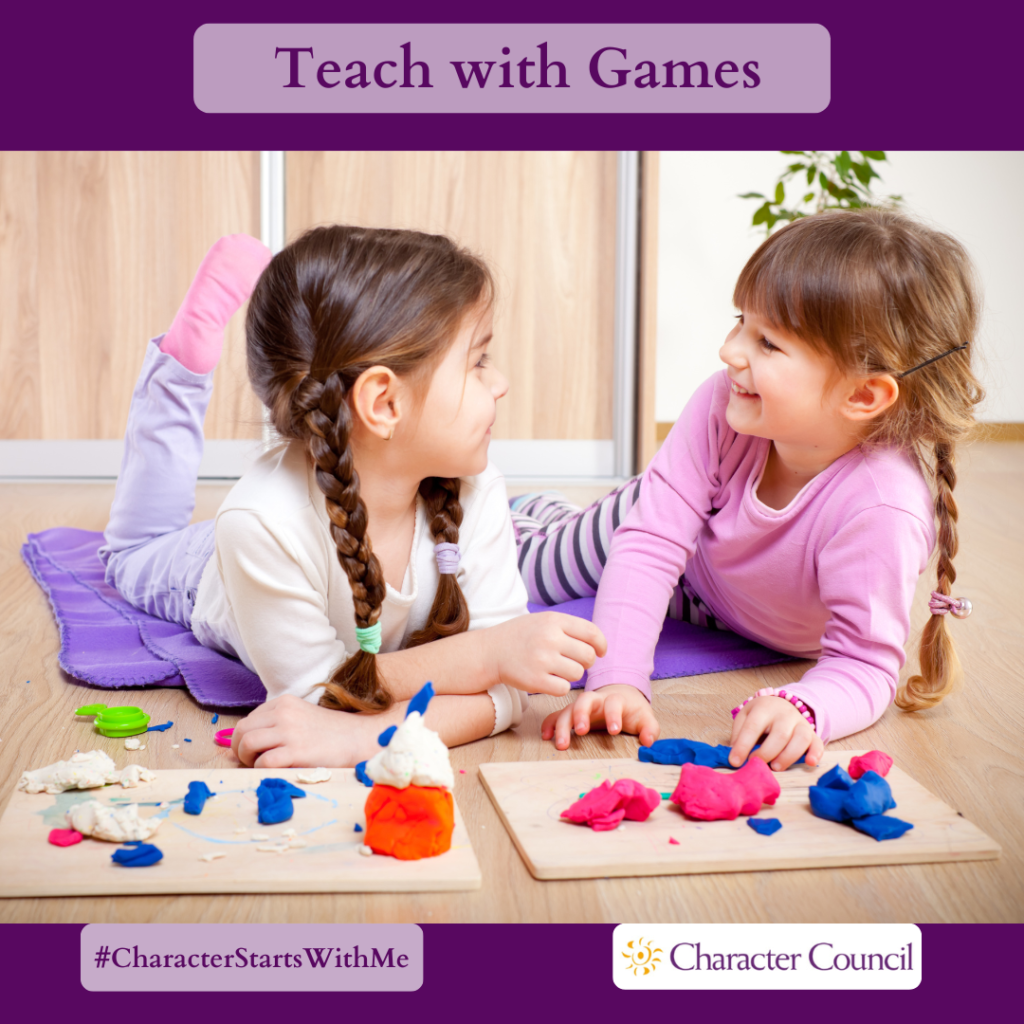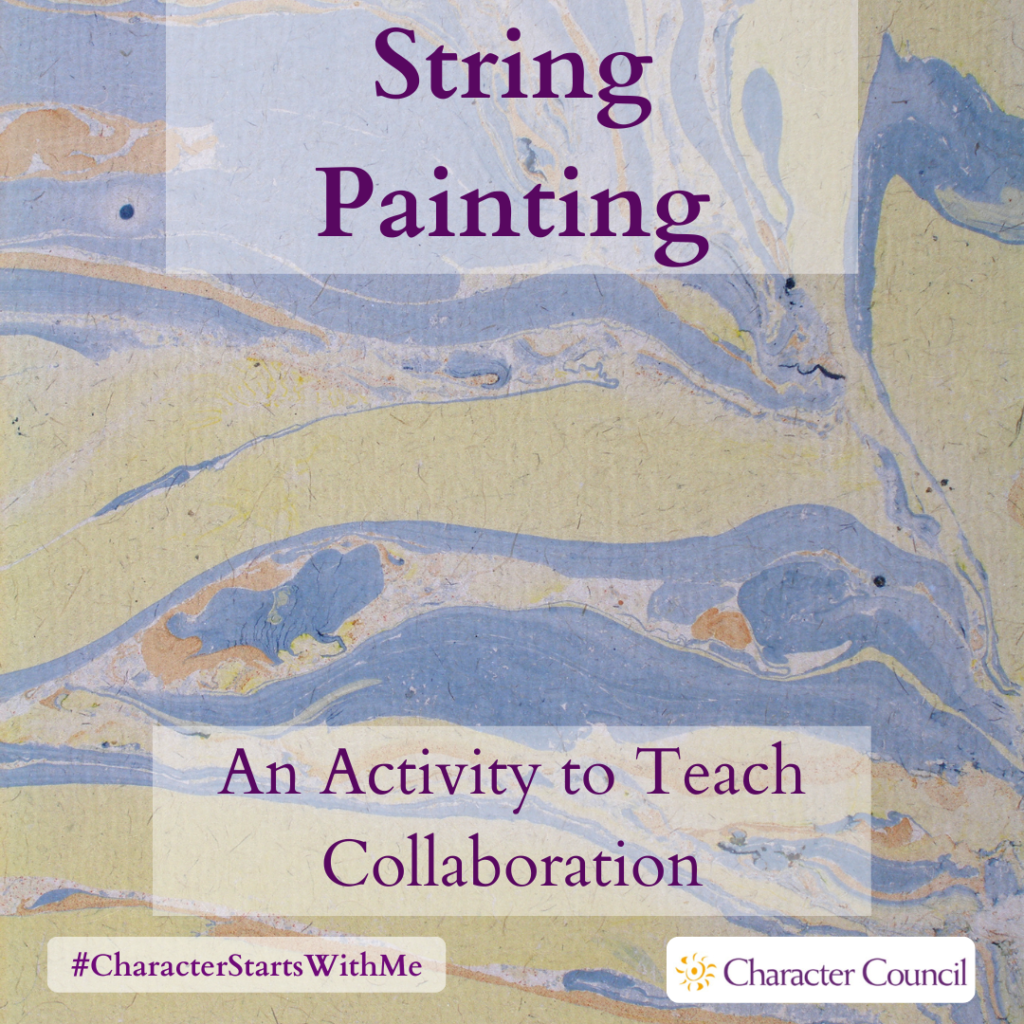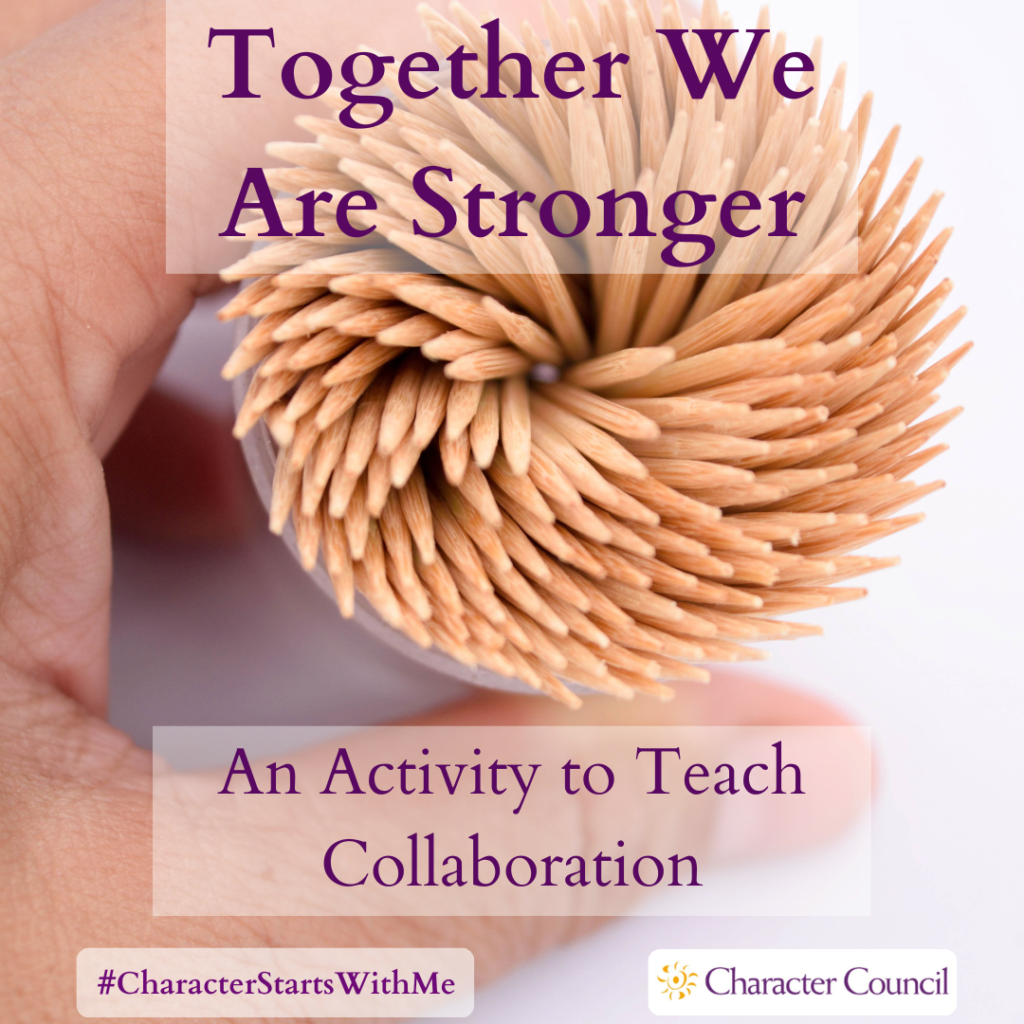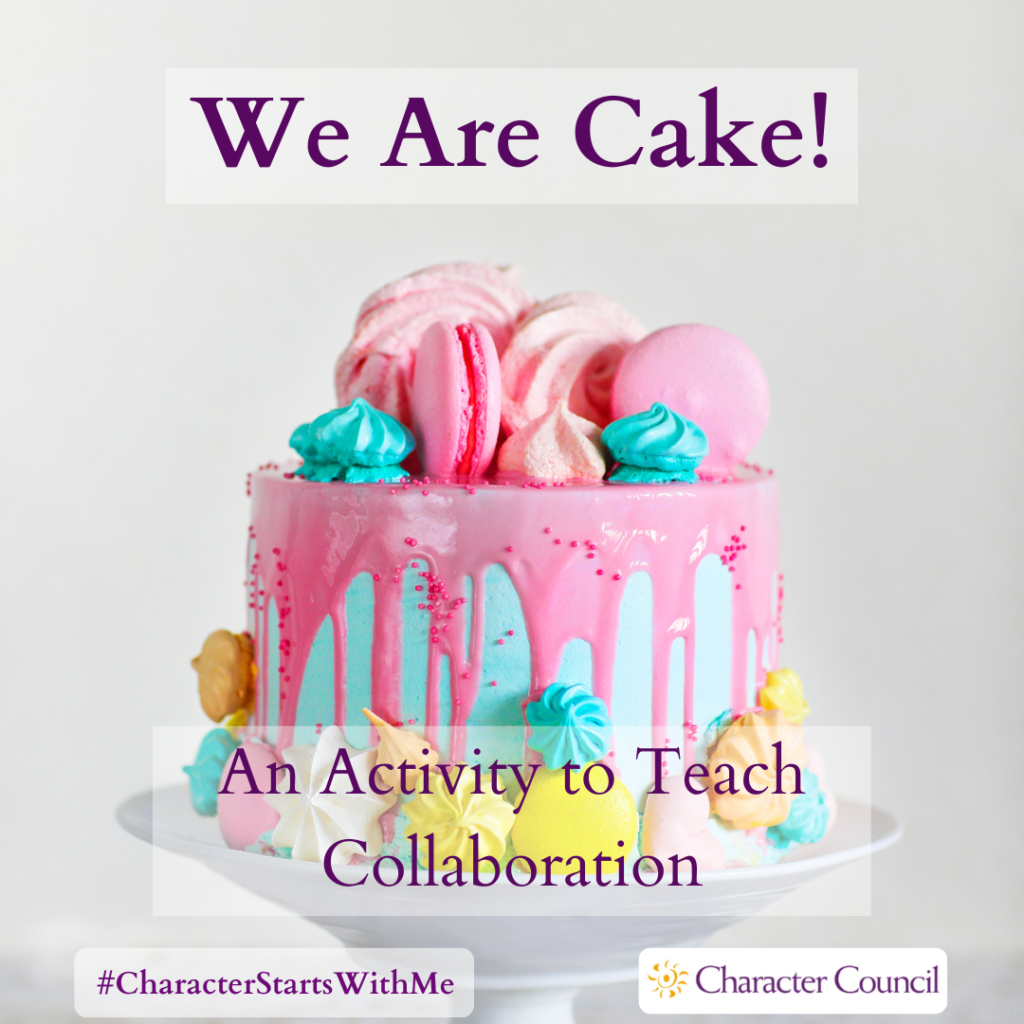
Collaboration Activities
The activities here are fun ways to teach character. The game aspect makes the lesson more memorable. Each activity has processing questions at the end. Without processing the activity, the exercise is just a game. To make it a stronger lesson when you process it, relate the character quality to a core value that your organization promotes.
Consider picking a student to run the activity. You will need to give them time ahead of the activity to prepare. Another option is to pick a few students to run the activity for a younger classroom after you have run it for your class. Encourage your students to repeat it in the home for younger siblings or even parents.


String Painting
You will need to pair students. Place a sheet of art paper in the center of a large sheet of newsprint. It is a good idea to tape the newsprint to the table, desk, or floor. You will need a string or a piece of heavy yarn or thin ribbon that is longer than the paper sheet. Drop a few tiny pools of paint onto the paper. The students will each take hold of the ends of the yarn and work together to stretch the string over the center of the paper. Together they will lower the string until it lays in one of the paint pools. Together they will decide how to drag the string through the paint to create a design on the paper. They can lift the string and reposition it at any time. Caution them to keep any string that has paint on it over the newspaper. You can choose to do multiple colors of paint or all one color.
Another option is to put the paint (single color) only on one side of the paper. The string is placed on the paper, draping it through the different paint pools. Then fold the other half of the paper over it. A piece of cardboard is placed over the folded paper. One person will hold the cardboard down, and the other person will pull the string out. You can open the paper and add a different color of paint, a new string (or one from a different group that used that color) and have the students reverse roles and do it again.
To process the activity, ask these or similar questions:
- Was it fun to create a painting?
- Could you have done a string painting by yourself?
- Did you let your partner make some decisions?
- Did you like your finished product?
- The next time you need to work with someone on a project, will you remember the artwork you created and collaborate?

Together We Are Stronger
You will need enough toothpicks to have at least two per person in the group. You will also need a small rubber band large enough to hold several toothpicks in a bunch.
Pass out the toothpicks to each person. Ask them to break one toothpick. Each person should be able to break it easily. For younger children, you may need to help them. Now have each person hand you one (or two if your group is small). Using the rubber band, bundle them into a single group. Ask everyone if they think they can break this bunch now. The answer will be no. When a group works together, they are stronger.
To process the activity, ask these or similar questions:
- Was it fun to break a toothpick?
- Did it make you feel strong?
- What did you think when we bound them together? Did you think you would be asked to break it again?
- What ‘binds’ you to your classmates? (being in the same room, learning together, helping each other, being nice to each other)
- What do you think the phrase “strength in numbers” means?
- What are some examples of working together or cooperating in the classroom? The hallway? The cafeteria? The bus?
- Will you remember the bundled toothpicks when you need to work together?

We Are Cake!
Find a picture of a whole cake that fills an 11 x 17 sheet of paper. Cut out just the cake and then cut it into as many puzzle pieces as you have students in the classroom. The pieces do not have to be the same size or shape. On the back of each piece, write a part of the ingredients. For example, if the recipe calls for 2 cups of flour, you can divide it into portions that add up to the total needed. Do this for all the ingredients so that if everything written on the back were combined, it would be the batter to make a cake. You will want to have the pieces outlined on another sheet and have the ingredient name written on each outlined section so they can find their place. Pass out the pieces so that the words are visible to each student. If your picture is a light background, you can have the students write their names on the front (picture side). Ask all those who have flour to stand. Ask them if flour tastes like cake. Of course, the answer is No. Have those students put their puzzle pieces on the second sheet. You may want to use a glue stick to stick the puzzle pieces together. Now ask all those who have the baking powder to stand. Ask them if baking powder tastes like cake. Do this for all the ingredients until the cake is assembled. Assemble the puzzle with the cake picture side visible. If a student is out, make sure they get to add their piece to the puzzle when they return.
When finished, process the activity with these or similar questions:
- Was it fun to bake a cake together like this?
- Would you want to eat just flour?
- Would you want to eat cake? (All the ingredients together are much better!)
- What would happen if we left one of the ingredients out?
- Will this activity help you remember that you are an important part of the groups you are in?
Final thought: Mixing a cake’s ingredients is like all the students in the classroom working together. If somebody consistently forgets their homework or supplies, it affects the class just like too much baking powder or too little sugar will affect the cake.
Here is a recipe for a cake from scratch.
INGREDIENTS
1/2 cup unsalted butter, softened
1 1/2 cups sugar
3 large eggs
2 1/4 cups all-purpose flour
1 teaspoon salt
3 1/2 teaspoons baking powder
1 1/4 cups whole milk
1 teaspoon vanilla
2 1/2 cups buttercream frosting